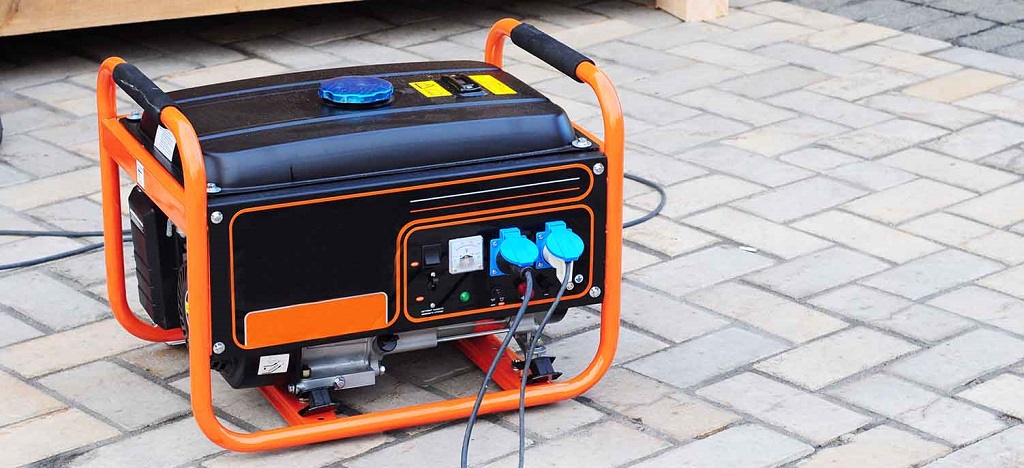The electric generator is one of the devices with the highest demand on the market due to its ability to convert mechanical energy into electrical energy. The generator or generator is a device designed to maintain an electrical potential difference between two of its points, called poles, terminals or terminals. What allows the transformation of mechanical energy into electrical energy?
How do generators work?
The transformation is achieved thanks to the action of a magnetic field on the electrical conductors located on an armature known as a stator. When a relative movement occurs mechanically between the field and the conductors, an electromotive force (EMF) will be generated. The system of an electric generator is based on Faraday’s law.
The fundamental basis
An electric generator operation is found in the Faraday Law. This law establishes that for an electric current to be generated, there must be a movement between the magnetic field and the conductor, since “the voltage induced in a closed circuit is directly proportional to the speed with which the magnetic flux that passes through changes over time. Any surface with the circuit as an edge”.
The electrical generator or generator uses a magnetic field to create a movement of electrons and produce electrical energy.
Assembly
By assembling the conductive coil to a direct electrical current, a change in the flux of the magnetic field is obtained, which interacts with the poles of the magnet and causes the coil to rotate on itself, producing an automotive force with the ability to transform itself into electrical energy.
If an external circuit is connected to the coil terminals, this voltage will create a current through this circuit, which will be energy that will be transmitted to the load. Therefore, the mechanical energy that makes the coil rotate is transformed into electrical energy.
The coil
In a little more detail, the coil is made up of rotating spirals. With this rotational movement, the spirals cut the induction lines of the magnetic field with their tips while introducing and maintaining the current while they are in motion. For its part, the group of brushes is in charge of externalizing the generated current. Also part of the electric generator or generator, the collector consists of welded rings.
To function, the generator’s current provides to the outside through the brushes reverses its direction each time the coil rotates half a turn. When this happens, the intensity increases from zero to a certain value then decreases until it reaches zero again and varies its value in the same way.
Fuel
The generators greater than 1 kW generally have a battery and an electric starter. Very large units can be started with compressed air or an air-activated starter or fed directly into the engine cylinders to initiate engine rotation.
Types of electric generators
There are two main types of generators or generators:
- The primary ones: these are capable of converting any type of energy they receive into electrical energy.
- Secondary: these deliver to the terminals, a part of the energy received in the form of electrical energy.
Other types of electric generators or generators are as follows:
Inverter electric generator
It can filter the sine wave to create a pure wave with the required magnitude and frequency, thus overcoming the negative and positive elements. In other words, this generator allows the regulator to emit a stable electric current that neutralizes the vulnerability of electrical appliances and household appliances against scattered and poor quality sine waves.
Single-phase electric generator
It is a sinusoidal generator or generator for producing, distributing, and consuming electrical energy made up of two terminals and a single alternating current that conducts a single 110-volt line.
Three-phase electric generator
It is a sinusoidal generator formed by three single-phase alternating currents connected in a triangle or a star. They have a higher performance than receivers, especially in engines.
Although the current generated is alternating current, it can be rectified to obtain direct current. Most AC generators or generators are three-phase or three-phase.
Use
The electric generators can be used in private or industrial sectors. When used in industrial sectors, they are called a generator.
In the particular aspect, they are used as emergency devices to have electricity when there is an interruption in the standard electricity supply.
On the other hand, electric generators are used to provide electricity in places where it is not available, be they remote villages, caravans or camping areas, and as a complement to solar panels, when solar energy drops due to climatic reasons.
In the industrial aspect, electric generators are also used as automatic emergency systems to provide energy to hospitals, schools, institutional buildings or factories, and sectors in which work is carried out in places far from a main electrical network, as in construction or mining.
You may also like to read, Tips to keep your heavy machinery in good condition

